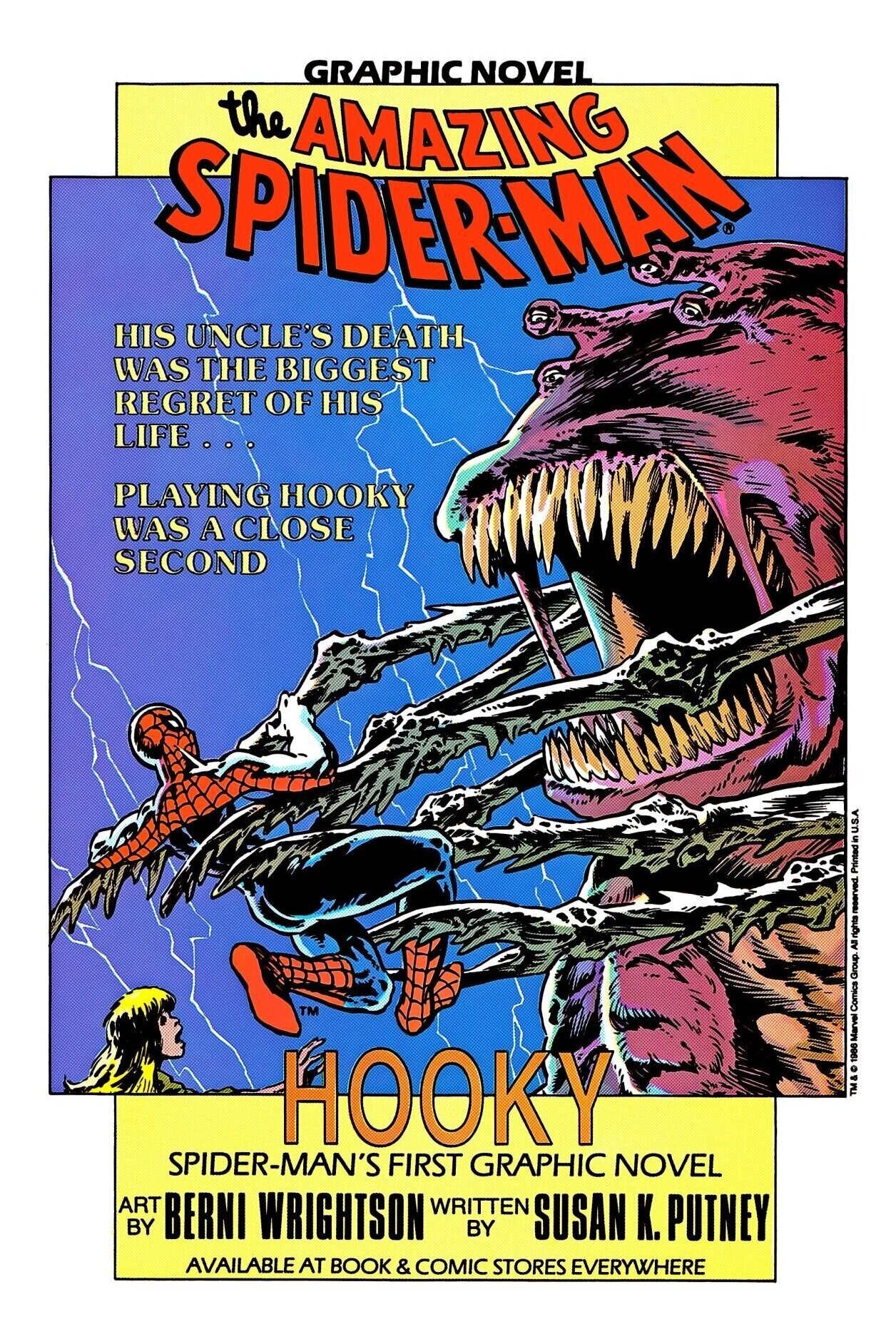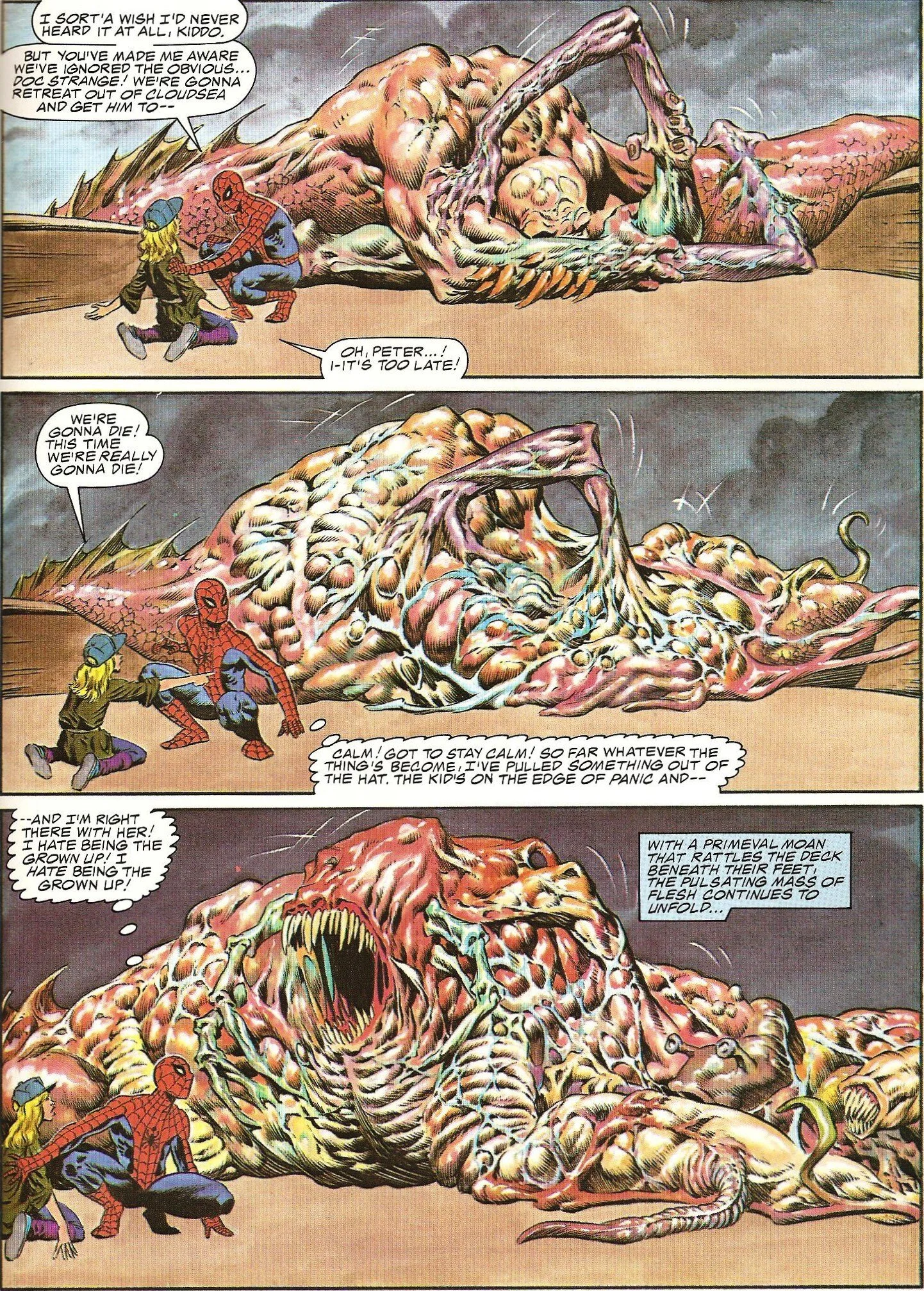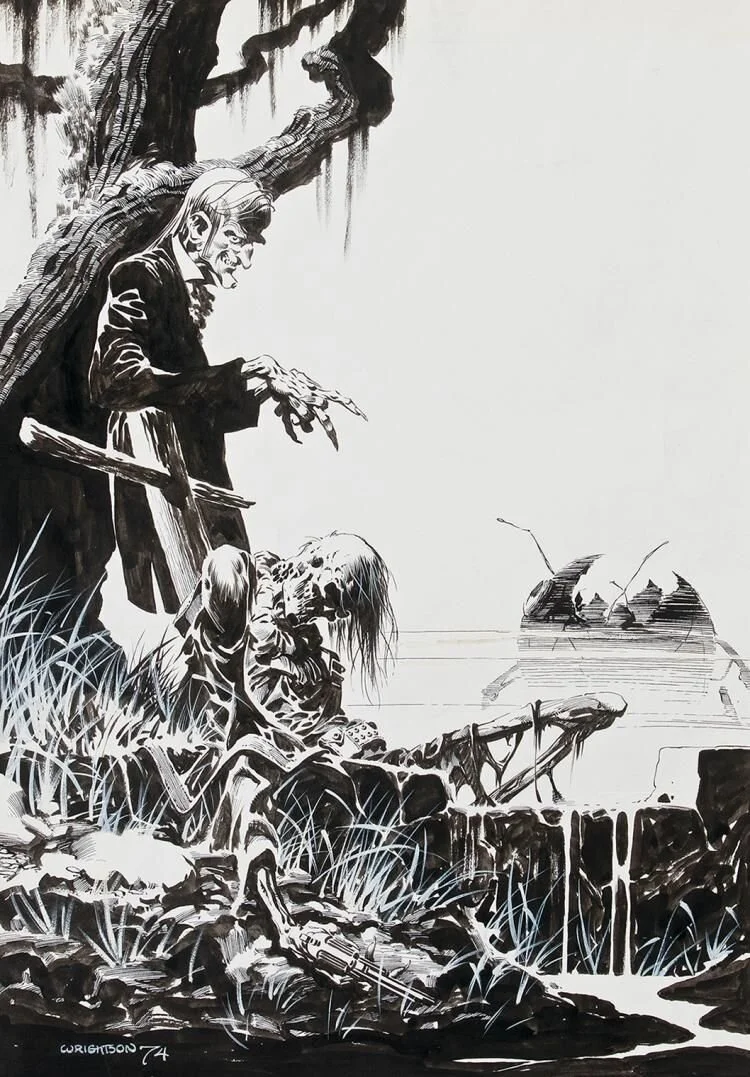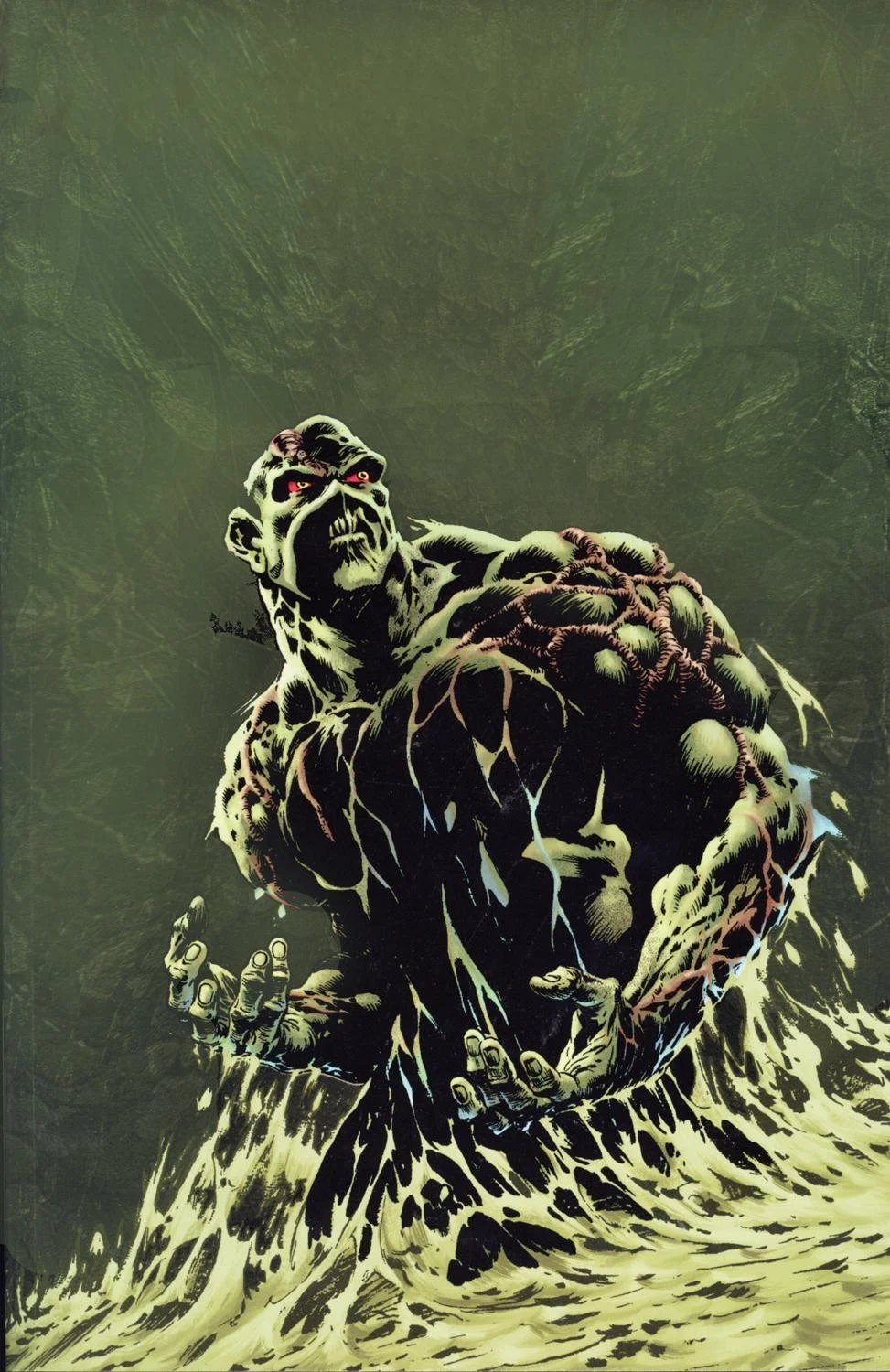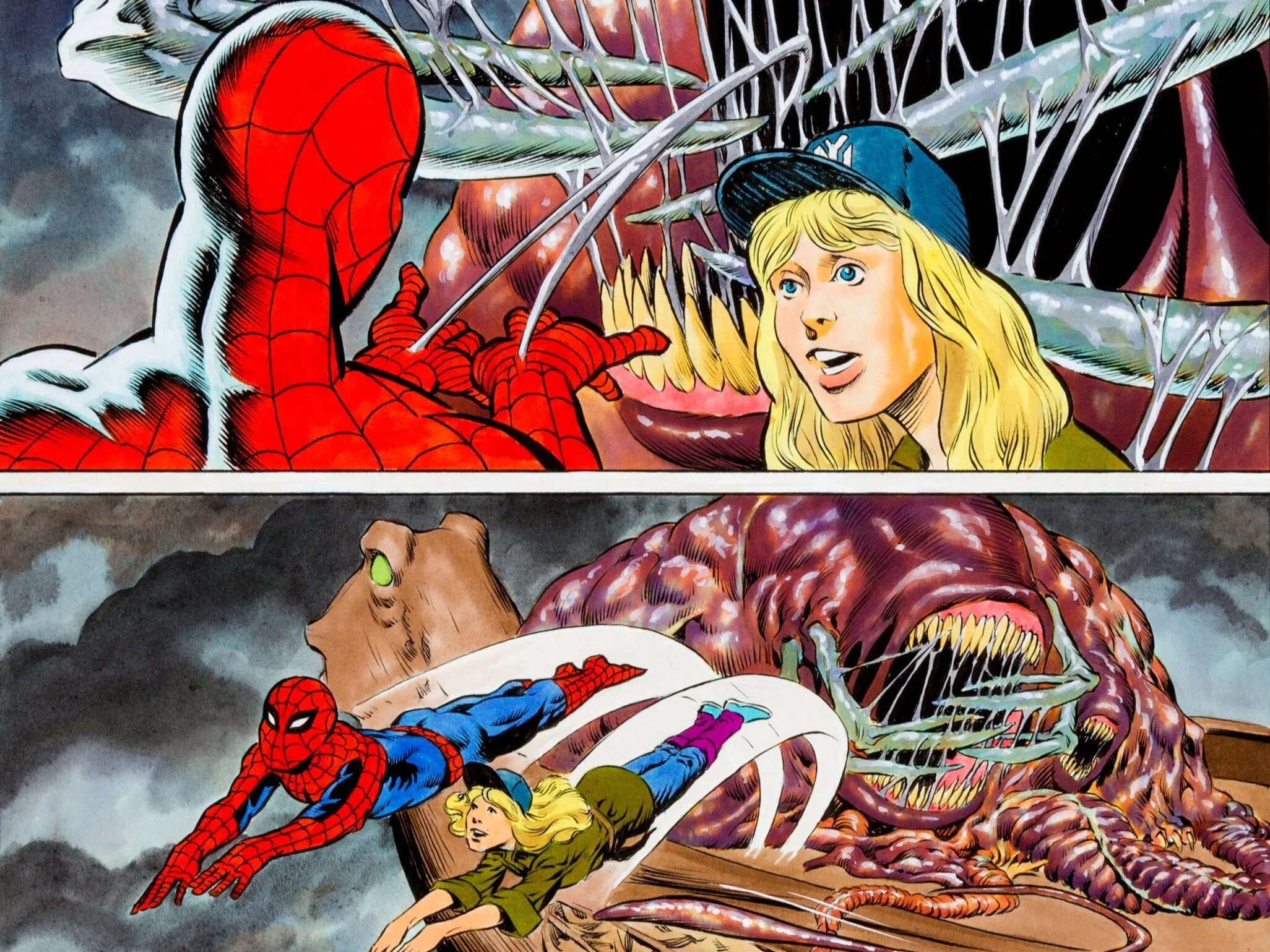Spider-Man: Hooky (2012)
Ad for Spider-Man: Hooky (via Marvel comics)
I am a big fan of comic book auteurs Ed Piskor and Jim Rugg. They have a very unique talent for taking familiar ideas and tropes but tweaking them in such a way that it becomes vibrant and slightly askew. The two friends collaborate on a project called Cartoonist Kayfabe where they spotlight various issues, runs, or particular comic artists (in this case, “artist" is used to describe a writer and/or an illustrator) in writing and video form. While compiling various issues I wanted to spotlight in this feature, I would occasionally find them discussing something I was already planning to cover. Other times, like with Spider-Man: Hooky, I was so blown way by learning about their uncovered treasure that I had to add it to the pile. This one is quite literally a trip y’all.
It’s important to start off by noting who Bernie Wrightson was and why his melding with Marvel’s house style with their flagship is unusual and mesmerizing. Wrightson (often called “Berni” by his friends—and how he’s credited in Hooky) was one of the premier horror/genre artists of the 20th Century. From the 1960s to his retirement in 2017, Wrightson was putting out some of the most exquisite comics and illustrations combining chiaroscuro, anatomy, phantasmagoria, all blending into images that had a true tactile aspect. The way he drew sinewy muscles and slimy viscera felt grotesque, over the top, and yet very real all at once.
(via Marvel Comics, art by Bernie Wrightson)
He worked on titles such as Swamp Thing, Creepy, Heavy Metal, Batman, The House Of Mystery, multiple posters/one-off illustrations of Frankenstein and other monsters. He provided illustrations for Stephen King’s Cycle Of The Werewolf, revised edition of The Stand, Wolves of Calla, and the comic adaptation of CREEPSHOW. And, on top of all of that, he also worked in film - providing concept art for GHOSTBUSTERS, GALAXY QUEST, SERENITY, LAND OF THE DEAD, THE FACULTY, and, bringing all back around to Hooky, 2002’s SPIDER-MAN. He died in March 2017 from cancer and remains a giant in the art world.
Meanwhile, very little is known about the writer of the Spider-Man: Hooky, Susan K. Putney. Hooky appears to be her biggest title to date, but she also wrote 1972’s space opera Against Arcturus and was a comic book store owner at some point. Again the information is very scanty, but this graphic novel with Wrightson seems to have been her only work in comic books. (If anyone knows more information, or wants to send Ms. Putney my way, please contact me)
Spider-Man foils crime (2012, via Marvel, art by Bernie Wrightson, script by Susan K. Putney)
So what is Spider-Man: Hooky about? That’s a bit fuzzy. In “bitter January” at 11pm (despite the sun shining very brightly in all of the panels), Peter Park swings into action as Spider-Man and shuts down an attempted break-in. As the crime is foiled, an (apparently) 12-year-old girl walks up to him, reveals she knows Spider-Man is Peter Parker and that she knew Uncle Ben. This throws Spidey for a loop and agrees to meet back up with her later that night to solve this mystery when she asks for his help.
This mysterious woman is Marandi Spindrifter (expect that name to show up in a Star Wars property at some point). She is a centuries old sorceress who is stuck permanently looking like she’s 12 and used to deliver newspapers to Uncle Ben when Parker was just five. Which is a tenuous connection at best—though it is an odd staple that 90% of the antagonists and/or super-powered people Spidey meets are somehow connected to his social life somehow. I guess Queens is a pretty small place after all. Mirandi enlists Spider-Man to fight a horrible monster in her plane of existence known as the Tordenkakerlakk (or “thunder roach” in Norwegian).
Spider-Man and Marandi flee a monster (via Marvel Comics, art by Bernie Wrightson)
The travel through the gates and into this fantastical land is Wrightson at his best. He combines a lot of the ethereal weightlessness and barren landscapes of Moebius, the grotesque monsters found in H.P. Lovecraft (and THE DEADLY SPAWN), and finds a much later take in his art. Spider-Man revels in being able to fly instead of swinging. Mirandi’s blonde hair is golden against the biological abominations while Parker’s costume pops with its bright red and blues. It’s interesting to note that Wrightson went for a retro look here (though the issue seemingly takes place completely out of continuity), donning Spider-Man in an outfit very similar to his 1967 cartoon series appearance.
Putney’s script is fairly nonsensical, but that is incredibly charming. There’s exposition upon exposition with little actual reasoning or logic for why Mirandi can do certain things or why her dimension looks and acts like it does. But that is very much in line with the old style of Stan Lee, Jack Kirby, and Steve Ditko where basically it was “a wizard did it” and they moved on. It’s grandiose and clunky, but it’s fun to see Spider-Man out of his element and just taking it all as it comes along.
(via Marvel Comics, drawn by Bernie Wrightson, written by Susan K. Putney)
Tordenkakerlakk is a pretty interesting villain, besides its horrific, incredible design. Every time the monster is defeated, it comes back more powerful and menacing than before. (This is very similar to one Doomsday’s origins in DC comics—though that may have been retconned by now) Like the discussion of escalation in THE DARK KNIGHT, this parallels Parker’s struggles with the constant need to battle his foes, and comic book writers having to always one-up the previous threat so that each time it’s even more serious and readers can’t scoff at how difficult it is to win.
(via Marvel Comics, drawn by Bernie Wrightson, written by Susan K. Putney)
The ending is a bit of a fumble and tries to walk that line between adhering to the adage of “great power comes great responsibility” and creating boundaries for self-care, but ultimate is a clumsy shrug. With the possible exception of maybe Spider-Man: Fever by Brendan McCarthy, there really has never been another Spider-Man book like it. It’s not the most satisfying story, but Putney’s throwback style and kitchen sink imagination melded with the phantasmagorical visions of Wrightson makes for a wholly unique experience.
You can get Spider-Man: Hooky on Marvel Unlimited here or you can find copies on eBay here.


